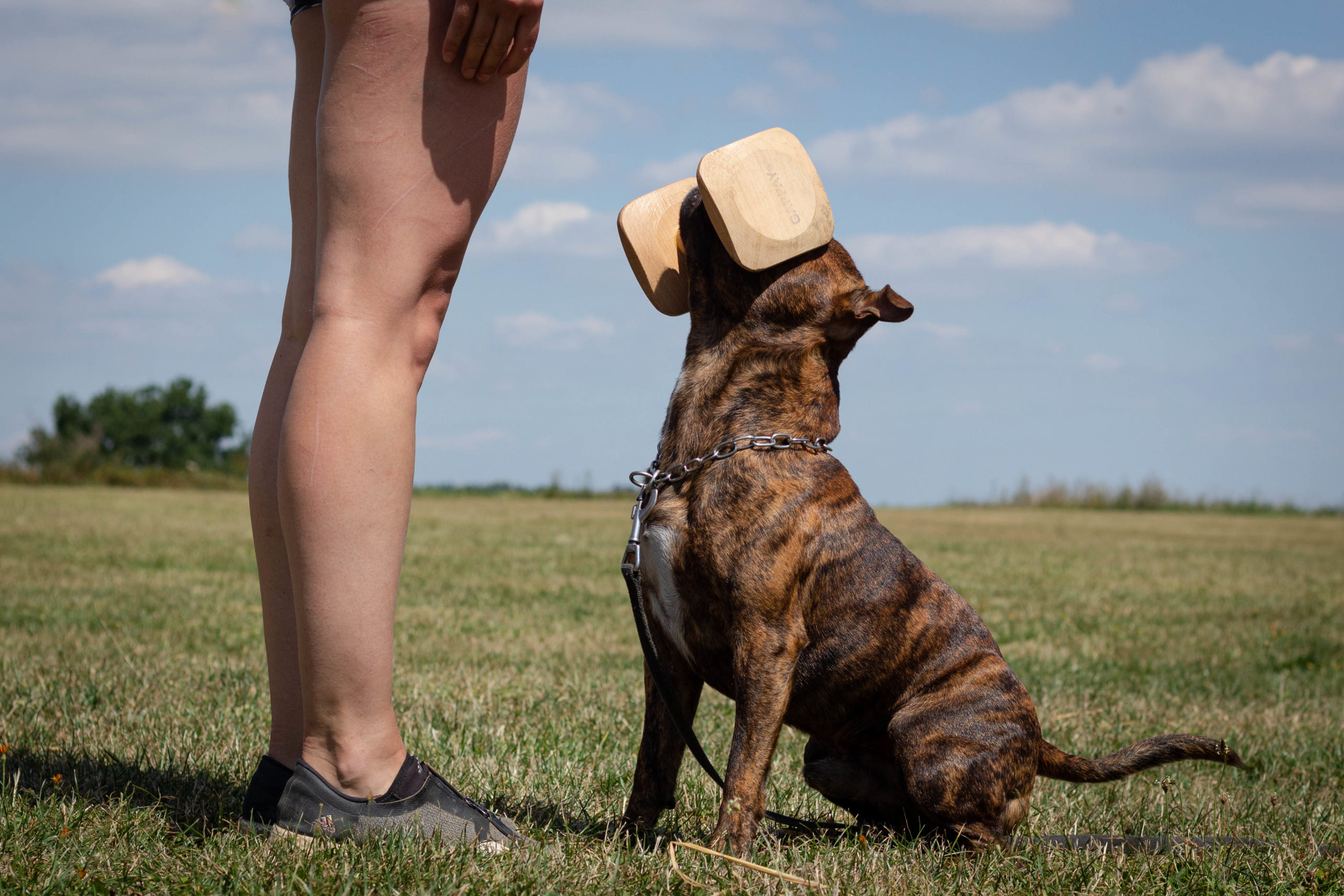
23 Srp Retrieve Components Overview – Part 2: Throwing and Focus
In the first article of this series last week, we went over all the components of the retrieve that come before you even throw the dumbbell. Today, let’s finally get into the interesting part: the actual act of throwing the dumbbell.
I have already written an article about how you, as the handler, should approach throwing the dumbbell, so go read that one if you haven’t already. Being able to throw the dumbbell perfectly will make your dog’s job of fetching significantly easier.
Three focus options during throwing
What I haven’t addressed in that article is how your dog should behave while you are throwing the dumbbell. The obvious issue is he should be sitting still and not moving. You can find out how to go about that in this article.
Having said that, have you ever thought about where your dog should focus as you throw the dumbbell? This seems like a minor issue but is pretty important and can greatly help your dog. There are essentially three options:
- As you start throwing the dumbbell, your dog looks forward and watches you throw the dumbbell, seeing where it lands. He then stays focused on the dumbbell and starts running to fetch it upon your command.
- Your dog is focused upward the whole time as you are throwing the dumbbell. He does not watch the dumbbell but instead keeps his focus on you. Then, he runs to fetch on your command, having to quickly figure out where the dumbbell is lying while on the go.
- The third option is a bit of a mix of the two options above. Your dog looks forward and watches the dumbbell drop to the ground. He memorizes the spot where it lands and then refocuses upwards on you. After that, you give the command, and he can then run and fetch.
Any of these options is okay according to the regulations, so you personally have to choose the one that is most suited to your dog. As with many things in obedience, you will have to try and experiment to find out which tactic is best for your dog and stick with it.
The two extremes
Option 1 is good for low-drive dogs or maybe older dogs. Keeping their focus on the dumbbell makes it easier for them to start running straight toward it after your command has been given. If they were to focus anywhere else, it might take them a second to realize what is going on, and the retrieve could look unnecessarily slow because of that.
If you have the polar opposite—i.e., a high-drive or maybe nervous or anxious dog—letting him focus on the dumbbell would probably be a big mistake. He might not be able to contain his excitement, he might rock forward and backward in anticipation, or he might move his front paws, aching to run. In extreme cases, he might even run to fetch before you give the command.
All of the above can be pretty point-expensive. If you have a really extreme dog, option 2 is your best friend. By maintaining your dog’s focus upward at all times, the chances of him making some of the mistakes described above is much lower.
There is a slight disadvantage when it comes to your dog having to quickly find the dumbbell without knowing where it landed. This means that it is critical that you throw the dumbbell correctly. However, if your dog is very active and keen, he should have no problems zooming in on the dumbbell in a split second and fetching correctly.
Option 2 is really only for extreme cases. To illustrate the rarity of this for you, not even my Archer has to do option 2; he is a solid option 3 dog. I have used this option only a couple of times for the hundreds of dogs I have worked with.
The middle ground
Option 3 is the best choice for the majority of dogs. I usually start with this one, and only when I see it is not a good fit will I consider one of the other two. This option combines the best of both worlds.
The dog can comfortably see where the dumbbell lands. He can even plan how he will run towards it in his head. After he does that, he will refocus upward. The beauty of this technique is that you will immediately know that he is ready for the command.
It’s like your dog saying, “Okay, Mum, let me see how your throwing has improved. Oh wow, not bad! Almost exactly the perfect spot! You really improved after reading the article on mindful dogsports! Kudos! Yeah, this should be about six jumps, a quick grab and turn, and then straight back to get the ball—no biggie.”
Then, your dog’s head refocuses upwards, as if saying, “Give the word, Mum. I am ready to go.”
With this option, you will rarely have the problem of your dog not accepting the fetch command—which can happen with the other two options. The dog focusing on the dumbbell might miss you saying something. The dog focusing upward might not realize it’s fetching time. When using option 3, the dog himself will inform you that he is ready for the command. Try playing around with this technique, and unless your dog is an unusual case, he will probably enjoy this, and it will help him with his fetch.
Now you know how to set up your dog for the perfect retrieve, and next week, we will discuss the actual fetching. Go figure out which focus option is right for your dog, stay tuned, and be mindful.
